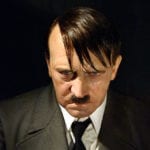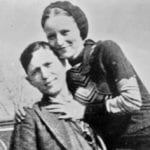 Weird Stuff
Weird Stuff  Weird Stuff
Weird Stuff  Our World
Our World 10 Ways Your Christmas Tree Is More Lit Than You Think
 Movies and TV
Movies and TV The 10 Coolest Stars to Set Sail on The Love Boat
 History
History 10 Things You Didn’t Know About the American National Anthem
 Technology
Technology Top 10 Everyday Tech Buzzwords That Hide a Darker Past
 Humans
Humans 10 Everyday Human Behaviors That Are Actually Survival Instincts
 Animals
Animals 10 Animals That Humiliated and Harmed Historical Leaders
 History
History 10 Most Influential Protests in Modern History
 Creepy
Creepy 10 More Representations of Death from Myth, Legend, and Folktale
 Technology
Technology 10 Scientific Breakthroughs of 2025 That’ll Change Everything
 Weird Stuff
Weird Stuff Ten Bizarre Facts About The Doge Meme
 Our World
Our World 10 Ways Your Christmas Tree Is More Lit Than You Think
 Movies and TV
Movies and TV The 10 Coolest Stars to Set Sail on The Love Boat
Who's Behind Listverse?

Jamie Frater
Head Editor
Jamie founded Listverse due to an insatiable desire to share fascinating, obscure, and bizarre facts. He has been a guest speaker on numerous national radio and television stations and is a five time published author.
More About Us History
History 10 Things You Didn’t Know About the American National Anthem
 Technology
Technology Top 10 Everyday Tech Buzzwords That Hide a Darker Past
 Humans
Humans 10 Everyday Human Behaviors That Are Actually Survival Instincts
 Animals
Animals 10 Animals That Humiliated and Harmed Historical Leaders
 History
History 10 Most Influential Protests in Modern History
 Creepy
Creepy 10 More Representations of Death from Myth, Legend, and Folktale
 Technology
Technology 10 Scientific Breakthroughs of 2025 That’ll Change Everything
10 Little-Known Stories From The US Civil War
The US Civil War was a horrible, brutal war. Men raised their weapons against their countrymen, and they slaughtered one another in one of the most violent and devastating conflicts in US history. By the end, 625,000 people had died—more American casualties than World War I and World War II combined.
Nobody imagined that it would be so devastating. When the war began, many thought it would be over in the blink of an eye. Some treated it like a game or a spectator sport. There are some little-known stories that show what people thought this war was going to be, and how the dark truth of what was really happening set in.
10 Congress Got In A Drunken Fistfight
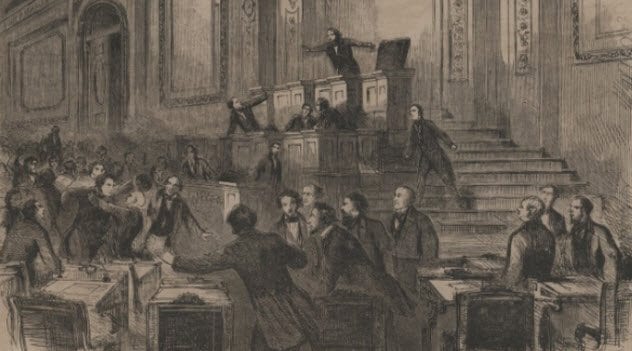
In 1858, the US Capitol gave the world an early preview of the war to come. Congress was debating the statehood of Kansas. Their proposed constitution permitted slavery and forbade free blacks from living in the state.
The Northern Republicans were furious. Congress spent days arguing about it. As the debate went on, extending past midnight, they started drinking heavily just to keep from falling asleep.
It was 1:30 AM when Laurence Keitt, a Democrat who was drunk out of his mind, stood up, pointed in Republican Galusha Grow’s face, and slurred out, “You’re a black Republican puppy!” Grow snapped back, “No Negro driver shall crack his whip over me!” Lunging at Grow, Keitt yelled that he was going to choke Grow, and the whole building erupted into a vicious brawl.
There was an effort to calm it down. The Speaker of the House tried banging the house mace, but it only made things worse. Another congressman, misunderstanding what the Speaker was trying to do, thought this meant that weapons were fair game. The congressman grabbed a metal spittoon and smashed it into someone’s head.
The fight didn’t stop until someone grabbed William Barksdale in a headlock and started punching him in the skull. Barksdale broke free, but his hairpiece didn’t come with him. Embarrassed, he picked it off the ground and put the wig on his head backward.
The politicians burst into laughter, and everyone finally calmed down. The fighting stopped, and they managed to come to an agreement—pacified by a man’s wig.
9 An Audience Came Out To Watch One Of The First Battles
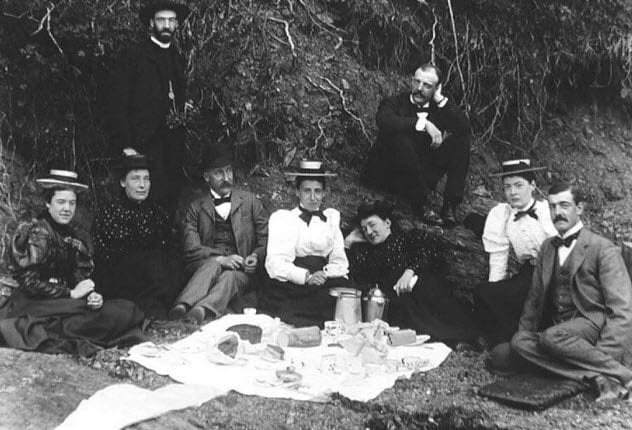
Soon, war broke out. On July 2, 1861, 30,000 Union soldiers marched to Centreville, Virginia, waiting to fight the First Battle of Bull Run (also known by the Confederate soldiers as the Battle of First Manassas).
The battle was only a few miles from Washington, DC, and for the people there, it sounded like a good show. This was still in the early days of the war, and they were sure that the Union would have a quick, bloodless victory. A lot of civilians figured there’d be no harm in going out to watch the war.
As dawn broke, a caravan of carriages and wagons made their way to the battlefield, where they set themselves on the side of a ridge to watch. One woman even brought opera glasses. As the battle began, she peered through her glasses for a good view of the fighting, letting out delighted little cries of “That is splendid!” and “Oh my! Is that not first-rate?”
Having an audience got people excited. A few soldiers walked over to the spectators and gave a running commentary on everything that was happening. Meanwhile, a few civilians became so worked up that they tried to sneak onto the battlefield.
Soon, though, it became clear that the Confederates were winning. A cavalry charge overran some civilians who had gotten too close. Some ended up as prisoners, and others didn’t make it out alive. As panic broke out, the audience had to flee and escape back to the capital.
8 The King Of Siam Offered War Elephants To Lincoln
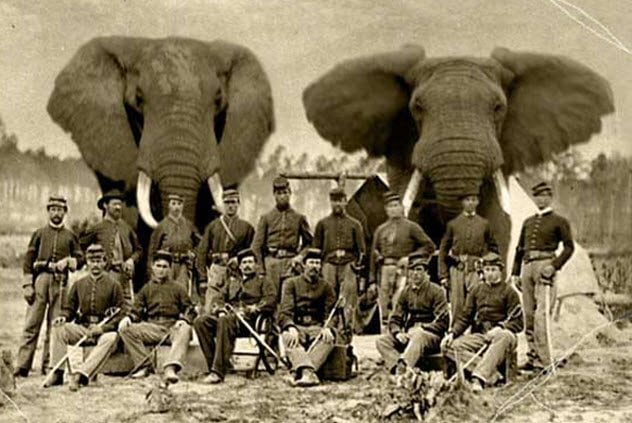
Before the war, King Rama IV of Siam found out that the US did not have elephants. This, King Rama IV felt, was a tragedy and one that needed to be righted as soon as possible.
When the Civil War began, Rama IV jumped on the opportunity. He wrote to Abraham Lincoln, offering to send him as many war elephants as he required. These, King Rama IV explained, would not only help him crush the Confederates but could also be put to work on construction projects or just set loose in the forests.
Lincoln did his best to be polite. “I appreciate most highly Your Majesty’s tender of good offices,” he wrote back. “Our political jurisdiction, however, does not reach a latitude so low as to favor the multiplication of the elephant.”
It’s easy to imagine, though, that a few years further in, Lincoln was probably regretting not putting a few war elephants on the front lines.
7 The Union Was Obsessed With Coffee
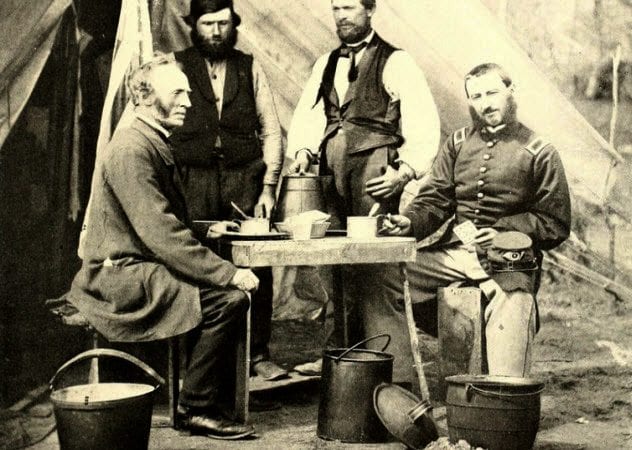
For the Union, coffee was a big deal. In fact, the word “coffee” shows up in Union letters and diaries more often than any other word—including words like “war,” “bullet,” “Lincoln,” and “mother.”
Coffee was a more regular part of soldier life than fighting. Every soldier was given a ration of 16 kilograms (36 lb) of coffee per year, and they drank it every morning. One rifle company even made a rifle that had a coffee grinder in the stock. Since most troops only fought two weeks per year, the coffee grinder ended up being used more than the bullets.
The Confederates, on the other hand, hardly had any coffee. Union blockades kept the Confederates from getting their daily caffeine fix. Some Confederate soldiers were so desperate for a java fix that they would brew potatoes and rye until they turned black, just to have a caffeine-free, bitter drink that the soldiers could pretend was coffee.
Caffeine actually made a strategic difference in the war. One Union general would time his attacks based on when his men were most buzzed on caffeine, convinced that the extra rush from coffee gave his men a fighting advantage.
6 One Of The Main Causes Of Death Was Diarrhea
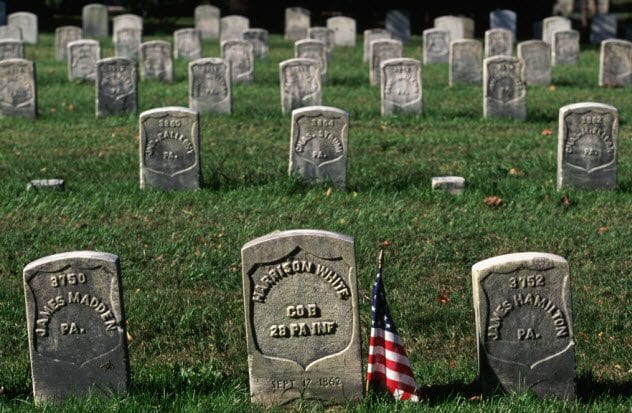
The men might have spent most of their time waiting instead of fighting, but that didn’t mean they were safe. The biggest threat in the Civil War wasn’t the enemy—it was disease. The squalid, unsanitary conditions of war let illnesses run wild. By the end, sickness had killed nearly twice as many men as bullets.
The biggest killer was diarrhea, especially from dysentery. Nearly as many men died in a fit of diarrhea as in combat. It was such a major problem that they set a code of battle: If any man was “attending to the imperative calls of nature,” it was forbidden to shoot.
An expression still used today came from this: “You have to have good guts to be a soldier.” When the Civil War soldiers first started saying it, they weren’t talking about bravery. In this war, anyone who couldn’t hold off diarrhea would have a short life.
5 A Battle Stopped To Watch A Fistfight
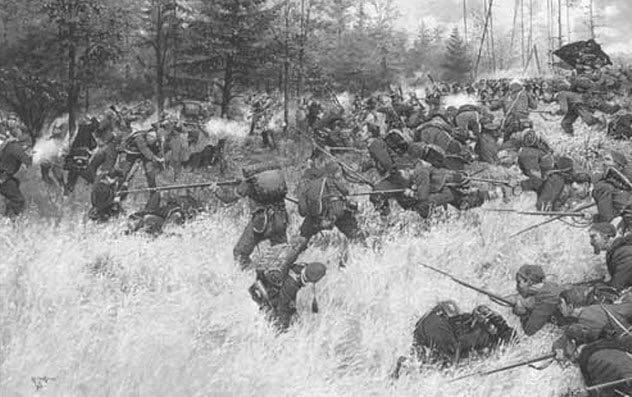
During a battle at Saunders Field, the Union and Confederate forces stopped shooting to watch two men duke it out.
The Union forces had opened fire on the Confederates, and in a panic, one of the men jumped into a gully for cover. When he got inside, though, he realized that he wasn’t alone. A Union soldier was already hiding inside, and now two men on opposite sides were cowering in a hole together.
The men started bickering. Each one was pretty sure that he had captured the other, but neither could agree on who had captured whom. So they decided to settle it the old-fashioned way. They would have—in their words—“a regular fist and skull fight.”
The sight of two soldiers climbing out of a gully and beating each other in the head was so baffling that both armies stopped shooting. For a moment, both sides just watched as the men beat the hell out of each other.
The Confederate soldier knocked down the Union soldier. He gave in, and the two men, agreeing on the winner, went back into hiding. As soon as they did, the war started up once more. The two men hid in the gully together until the battle was over. Then, true to his word, the Union soldier presented himself as a prisoner.
4 People Bought Tickets To Watch Prisoners Of War
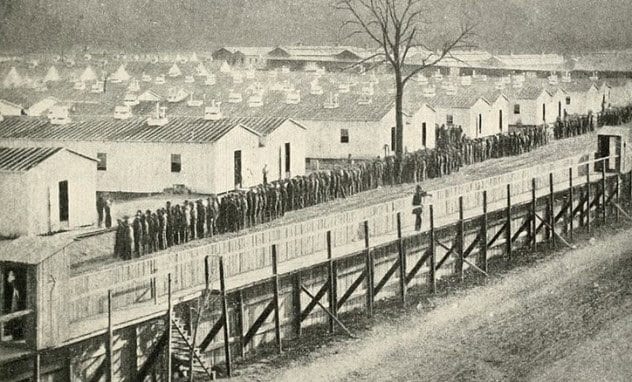
One of the most brutal prison camps in the war was Elmira Prison. It had been built to hold 5,000 Confederate soldiers. But as the war raged on and more people came in, the prison started getting more than it could handle. Soon, there were nearly 10,000 people crammed inside its walls.
The civilians couldn’t help but be a little curious, and it didn’t take long for someone to capitalize on it. A tower was set up across the street. For 15 cents, you could climb to the top, take a seat with some peanuts and lemonade, and watch the prisoners.
The prisoners started to realize they were being watched and, being bored out of their minds, began putting on shows to make it worthwhile. Some would juggle or do acrobatics to impress the audience watching them from above.
The guards put a stop to their antics, though. Soon, there was nothing to do but wither away. Disease spread through Elmira so viciously that a quarter of the prisoners died. But the audiences kept coming out, paying a nickel and a dime to watch men waste away and die.
3 Thousands Of Soldiers Held Massive Snowball Fights
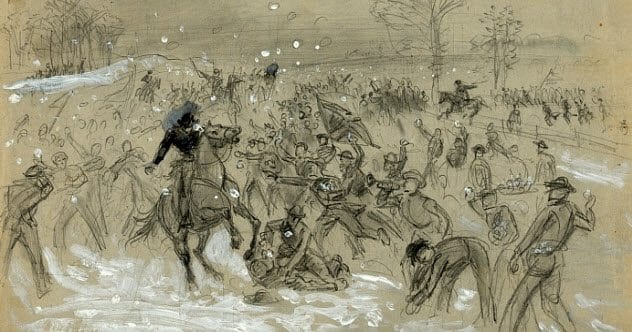
One morning in 1864, the Confederate Army woke up to 13 centimeters (5 in) of snow. The men rushed out and fought what may be one of the biggest snowball fights in history.
Up to 20,000 men were involved. The Tennessee and Georgian soldiers divided themselves into two armies, built up arsenals of snowballs, and charged at each other. On Tennessee’s side, Colonel Gordon even rode out on horseback, holding up a dirty handkerchief like it was a flag and pelting his men with snow.
Other fights broke out among the Confederate forces. Men lined up, using all their military training, and launched volleys of snowballs at the other side. Some who ran too close to the enemy line were dragged over to have their shirts stuffed with snow.
The boys, after all, were young—some only 17 years old. When the snow cleared, they picked up their weapons again and marched for another battle, where more than just a shirt full of snow awaited.
2 Southern Children Were Told That A Yankee Had Shot Santa Claus
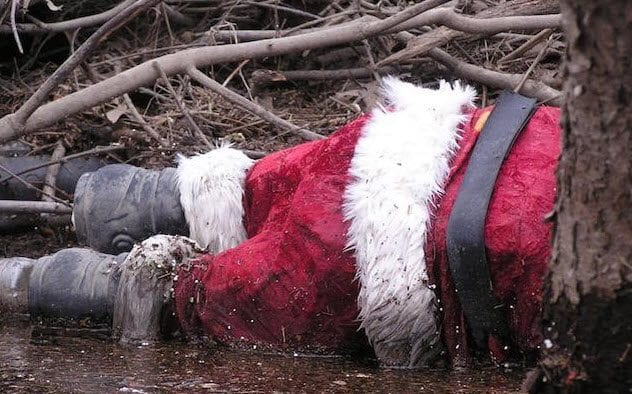
By 1863, the Union blockades had made life in the South insufferable. Prices were skyrocketing, and it was a struggle for families to afford food. As Christmas came around, parents were faced with the harsh reality that they would not be able to get anything for their children.
They had to come up with an explanation, and some of them were pretty harsh. Some parents told their kids that Santa Claus wasn’t coming because he had been shot by Yankee soldiers.
Other parents were a bit gentler, of course. Many told their kids that Santa couldn’t make it through the Union blockade. It affected the kids. In her memoir, one woman wrote that, as a little girl during the Civil War, she would spend her time staring at maps, trying to find a path that Santa Claus could use to break through.
1 An Entire University Signed Up And Didn’t Come Home
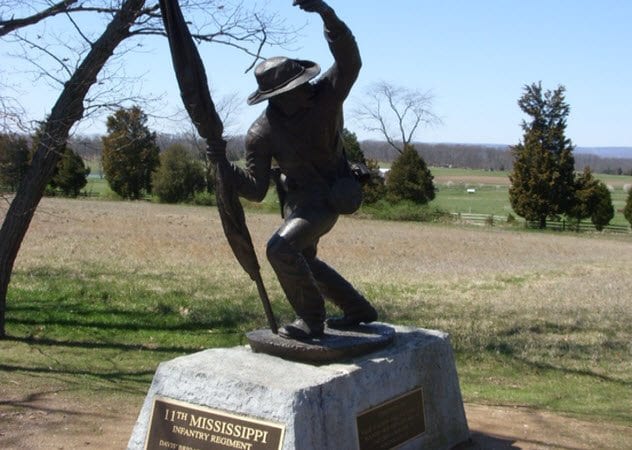
When the Civil War began, the University of Mississippi had 139 students. Of them, 135 signed up to fight for the Confederate Army. The school was put to use as a war hospital, and all but four members of its student body joined together to form Company A of the 11th Mississippi.
Not a single member of the company, nicknamed the “University Greys,” made it back unharmed. They group had a rare 100 percent casualty rate, with every man either coming back wounded or never making it home at all.
The Greys were even supposed to fight in First Battle of Bull Run. Their train, however, was delayed, and most of the men didn’t make it. Even without fighting, though, Colonel Moore became one of their first casualties by accidentally shooting himself in the foot.
The rest of the group kept fighting and nearly made it to the end. But on the last day of the Battle of Gettysburg, the Greys joined a mad, desperate charge against the Union soldiers. Of the Confederate soldiers involved, half died—and not a single man from the University of Mississippi made it out alive.
